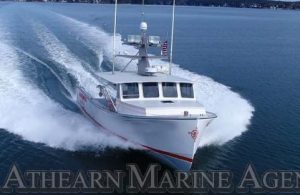Tag Archives: crabs
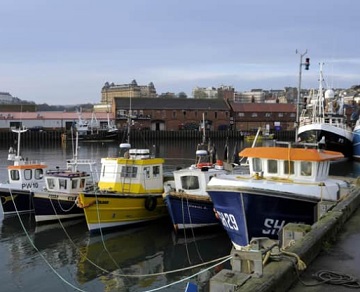
‘The job’s f****d’ – Fishers slam local MP for comments
The North East Fishing Collective (NEFC), which represents fishers from Hartlepool to Whitby, was established to support fishers along that stretch of coast after unexplained mass deaths of shellfish in the area in several events from September 2021 onwards left them without catches. Hartlepool MP, Jill Mortimer, last week shared a photo of her in a meeting with Environment Minister Mark Spencer in Parliament where she described how “prawners have experienced a temporary but significant reduction in their catches due to prawns burrowing into sands.” “The prawns and catches returned,” she wrote, however the NEFC has disputed this in no uncertain terms. >click to read< 14:57
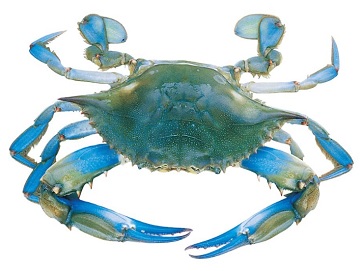
Crabs have evolved five separate times—why do the same forms keep appearing in nature?
Charles Darwin believed evolution created “endless forms most beautiful.” It’s a nice sentiment but it doesn’t explain why evolution keeps making crabs. Crabs belong to a group of crustaceans called decapods, literally “ten footed”, since they have five pairs of walking legs. Some decapods, like lobsters and shrimp, have a thick, muscular abdomen, which is the bulk of the animal that we eat. With a quick flick of their abdomen lobsters can shoot off backwards and escape predators. Crabs, by contrast, have a compressed abdomen, tucked away under a flattened but widened thorax and shell. This allows them to scuttle into rock crevices for protection. Evolution repeatedly hit upon this solution because it works well under similar sets of circumstances. Five groups of “crabs”,,, >click to read< 14:10
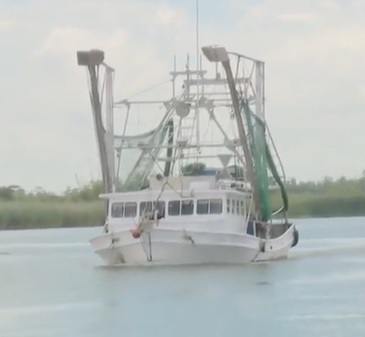
‘I don’t know where the breaking point is at’: A look at the threats the Louisiana seafood industry faces
Whether it’s crawfish, crabs, fish, shrimp or oysters, Louisiana is known for its seafood. The seafood industry is one of Louisiana’s largest employers. But the Louisiana seafood industry is threatened. “We are accountable for one-third of the seafood in this country. That’s something to be proud of,” said Mitch Jurisich, the chairman of the Louisiana Oyster Task Force and a third-generation oyster farmer. “But the industry, it seems like we’ve been under attack for several years now.” Those we talked to in the shrimp and oyster fishing business say there are problems gripping the seafood industry, including price, government projects and natural disasters. Let’s start with the price. Video, >click to read/watch< 21:44
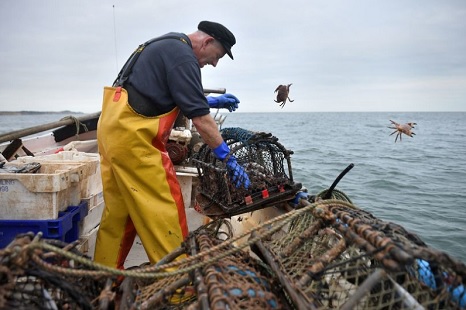
The Cromer crab is a Norfolk staple – but does it have feelings?
According to a report by the London School of Economics, there is strong scientific evidence to suggest crabs do feel and that they should be treated more humanely. The government’s Animal Welfare (Sentience) Bill, currently passing through parliament, is set to recognise crabs, lobsters and octopuses as ‘sentient beings’. Fisherman Mr Lee said the report’s suggestion that lobsters should not be boiled was “a total bloody nonsense”. Sue Riseborough, who served as Wells-next-the-Sea’s first and last gillying warden from 2016 to 2019, the recognition of crabs’ sentience is “brilliant” and “can’t be ignored”. >click to read< 08:55
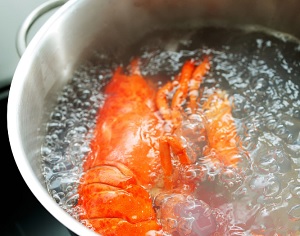
Netherlands to ban live boiling of lobsters, crabs
Minister Carola Schouten of Agriculture wants to ban the live boiling of lobsters and crabs. She will also look into what can be done in the Netherlands to ensure that the animals are not cooked alive.,, This follows a recent study commissioned by the British government that found strong scientific evidence that crabs, lobsters, and octopuses can suffer and experience pain. Britain, therefore, added them to the animal protection legislation. Animal welfare organizations want the Netherlands to do the same. >click to read< 11:38
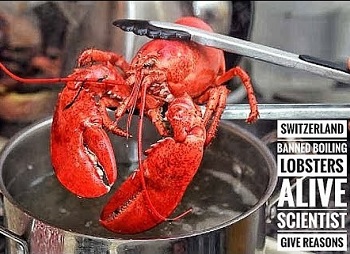
Speaking of the nutters! U.K. weighing ban on boiling lobsters alive
Under new amendments to animal welfare bill, crabs, lobsters, octopi, squid and other invertebrates, are set to be recognized as sentient beings that are capable of feeling pain. A simple google search will tell savvy home cooks looking to try their hand at cooking lobster to simply plunge the live creatures, headfirst, straight into a pot of (salted) boiling water. A piece of animal welfare legislation is currently winding its way through the U.K. parliament. “Lobsters struggle violently for approximately two minutes after being placed in boiling water,,, “scalding” animals to death is “unnecessarily cruel”, a belief that has been echoed by other animal welfare advocates and organizations, like the U.K. based Crustacean Compassion. Legislation banning boiling of lobsters alive has already been passed in a handful of countries, including New Zealand, Switzerland and Austria. >click to read< 20:34

Half Male – Half Female Chesapeake Blue Crab
This crab, known as a bilateral gynandromorphism, is about 4.5 inches long and is estimated to be in its third year. It has both blue and red claws at the tip and an apron (lower abdomen) split in the middle. Typically, male gazami crabs have blue toes and a T-shaped apron, while females have a red tip and a wide apron. Gynandromorphic crabs have not been reported on the East Coast for at least 15 years. Gynandromorphism does not occur in mammals, but has been observed in lobsters, crabs, snakes, butterflies, bees, chickens and other birds. Video, >click to read< 10:19

U.S. Crustacean Market to hit $10.2 billion by 2026
The U.S. is among the biggest markets for seafood & seafood-based products and it is ever-growing due to its inherent health benefits. The growth of the seafood demand is attributed to high disposable incomes and an exponential growth of omnichannel partners. E-commerce platforms and digital distribution channels have significantly escalated the seafood market in both formats including business-to-business as well as business-to-customer operations. Many retail giants such as Walmart and Target etc. engaged in the industry has been increasing the presence on these channels to reach out to more customers and deliver high-quality & fresh products. This trend is redefining the supply chain distribution of consumer products in the region. As a result of these marketing efforts, more people are buying or preferring seafood, which will support the growth of crustaceans. >click to read< 14:09
New England, Mid-Atlantic States Lead Nation in Volume and Value of Several Key Fisheries
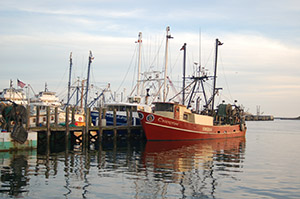 NOAA Fisheries has released the Fisheries of the U. S. 2016 report, and once again New Bedford, Mass. was the leading U.S. port by value and American lobsters were the nation’s most valuable landed species. Alaska led all states in the value and volume of commercial landings, with 5.6 billion pounds valued at $1.6 billion. Maine and Massachusetts ranked second and third in the value of landings at $633.6 million and $552.1 million, respectively. American lobsters were the nation’s top-valued species landed, with crabs second and scallops third. Alaska pollock ranked first in volume of landings, followed by menhaden and Pacific cod. click here to read the story 17:39
NOAA Fisheries has released the Fisheries of the U. S. 2016 report, and once again New Bedford, Mass. was the leading U.S. port by value and American lobsters were the nation’s most valuable landed species. Alaska led all states in the value and volume of commercial landings, with 5.6 billion pounds valued at $1.6 billion. Maine and Massachusetts ranked second and third in the value of landings at $633.6 million and $552.1 million, respectively. American lobsters were the nation’s top-valued species landed, with crabs second and scallops third. Alaska pollock ranked first in volume of landings, followed by menhaden and Pacific cod. click here to read the story 17:39
Dead lobsters, crabs and herring are washing up along this Nova Scotia shore, and we don’t know why!
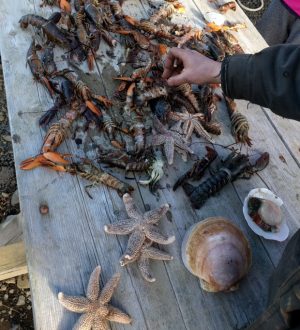 Halifax resident Eric Hewey was home in Digby, N.S., visiting for the holidays when he got a call from friends on Boxing Day summoning him to the beach below Savary Park in nearby Plympton. “They said we’ve got to come down and look at the beach.” On Tuesday Hewey described when he found when he arrived at the beach as sad: lots of dead herring — an ongoing and as yet unexplained problem — but also dead starfish, lobsters, bar clams, scallops and crabs. Ted Leighton is a retired veterinary pathologist who has been tracking the dead herring reports. He hadn’t been to the beach to see the most recent findings, but he’s seen Hewey’s pictures and noted it’s a place dead herring have been found before. More photos, read the rest here 13:09
Halifax resident Eric Hewey was home in Digby, N.S., visiting for the holidays when he got a call from friends on Boxing Day summoning him to the beach below Savary Park in nearby Plympton. “They said we’ve got to come down and look at the beach.” On Tuesday Hewey described when he found when he arrived at the beach as sad: lots of dead herring — an ongoing and as yet unexplained problem — but also dead starfish, lobsters, bar clams, scallops and crabs. Ted Leighton is a retired veterinary pathologist who has been tracking the dead herring reports. He hadn’t been to the beach to see the most recent findings, but he’s seen Hewey’s pictures and noted it’s a place dead herring have been found before. More photos, read the rest here 13:09
Cold winter puts damper on Louisiana seafood – Bad year expected
 It’s going to be a tough year for Louisiana seafood. Crawfish are already off to a slow start in terms of size and availability, and some of the same conditions responsible for that crawling pace could play havoc on crabs, shrimp and oysters later this year. Experts are blaming the one harvesting variable humans can’t control — a long, cold winter. Read more here 06:38
It’s going to be a tough year for Louisiana seafood. Crawfish are already off to a slow start in terms of size and availability, and some of the same conditions responsible for that crawling pace could play havoc on crabs, shrimp and oysters later this year. Experts are blaming the one harvesting variable humans can’t control — a long, cold winter. Read more here 06:38







































